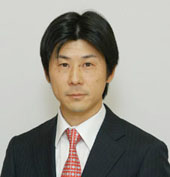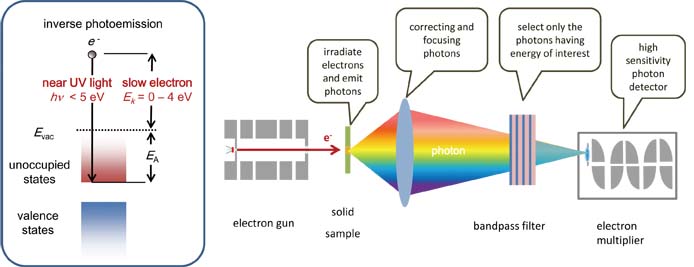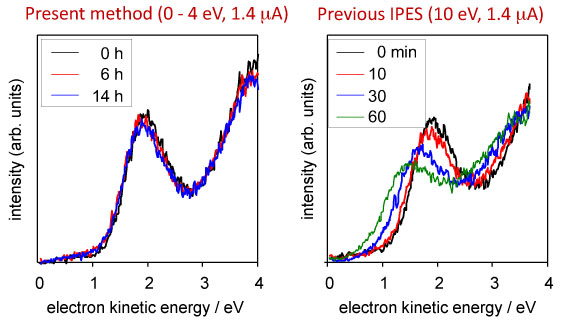Assist Prof Yoshida, H. ”New Method to Examine the Conduction Levels of Solid Materials: Near-ultraviolet Inverse Photoemission Spectroscopy” (Published in “Chemical Physics Letters” 8 May 2012)
|
New Method to Examine the Conduction Levels of Solid Materials: Near-ultraviolet Inverse Photoemission Spectroscopy
Published in “Chemical Physics Letters“(Online Publication, May 8, 2012).
Assist Prof Yoshida, H. |

Assist Prof. Yoshida, H. |
|
|
Assist Prof. Hiroyuki Yoshida demonstrated, for the first time, that the conduction levels of solid materials can be precisely examined by detecting the near-ultraviolet light following the injection of ultra-low energy electrons. This technique is especially suitable for examining the conduction levels of organic semiconductors because of low sample damage and high resolution. The new method will be used as a standard technique in the research and development of organic semiconductor materials and devices. |
||
| In organic semiconductor devices, the electronic properties and device performances are determined by the frontier energy levels. Of the frontier electronic states, the valence states, in which holes moves, have been intensively examined by photoemission spectroscopy (PES). In contrast, the study of the unoccupied states, which electrons go through, has been limited due to the lack of suitable experimental methods. To obtain a complete understanding of the operating principle of the devices, both the valence and conduction levels are equally important. | ||
| The conduction levels can be examined by inverse photoemission spectroscopy (IPES), which is a complimentary of PES. In previous IPES, either X-ray (hν> 1 keV) or vacuum ultraviolet (VUV;hν≈ 10 eV) photons has been detected following the injection of electrons with energies of 10 – 1000 eV into solid materials. The high energy electrons can damage the organic samples preventing further analysis of the conduction levels. Also, the energy resolution is limited to about 0.5 eV due to the difficulty of detecting X-ray or VUV photons with high resolution and sensitivity. Surprisingly, such instruments have been used without any fundamental improvement since the late 1970s. | ||
 |
||
| Figure 1. Energy level diagram showing the concept of the present method (left), and a schematic diagram of the experimental setup which implements this concept (right). | ||
| We have demonstrated inverse photoemission spectroscopy in the near-ultraviolet (NUV) range for the first time (Figure 1). Detection of NUV photons allows us to use high resolution optical bandpass filters that improve the energy resolution to 0.27 eV, comparable with the best-achieved values of the existing apparatus. By detecting NUV light, measurements can be made with ultra-low energy electrons having a kinetic energy less than 4 eV, reducing the damage to the organic samples by a factor of at least 1/100 as shown in Figure 2. As a result of the high resolution and low sample damage, the conduction levels of organic materials can be precisely examined. | ||
 |
||
| Figure 2. Time dependence of IPES spectra showing the radiation damage of copper phthalocyanine samples. No significant spectral changes are observed even after the 14 hours in this new method, whereas apparent spectral changes due to the sample deterioration are observed only after 10 min in the previous method. | ||
| This new method is expected to be widely used as a standard technique for screening new organic materials in developing organic semiconductor devices, such as organic light-emitting diodes (OLED) and organic photovoltaic cells. Further, precise and reliable information on the conduction levels is indispensable to improve existing devices or develop new ones. The new method can greatly speed up the development of organic semiconductor devices. | ||
| The present results appeared in the newspapers such as Kyoto Shimbun (May 12, 2012), Nikkan Kogyo Shimbun (May 14, 2012), and Nikkei Sangyo Shimbun (May 17, 2012). | ||
 Institute for Chemical Research, Kyoto University
Institute for Chemical Research, Kyoto University International Joint Usage Research Center
International Joint Usage Research Center